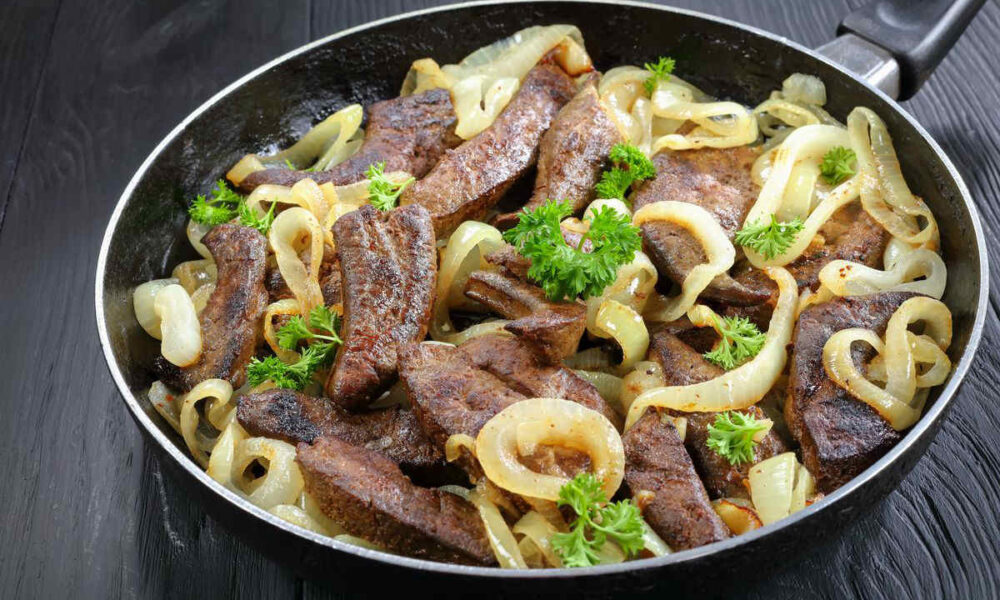Recipes
Venetian liver

Venetian liver is a classic traditional Venetian dish, simple to prepare also thanks to our suggestions and advice.
Venetian liver is a traditional dish from north-eastern Italy. The original recipe called for pork liver, but for some time now veal or veal liver has been more commonly used. It is a dish that thrives on contrasts, with the liver and onions complementing each other in a perfect marriage . For onions, the white ones from Chioggia are ideal, but outside the area of origin they are difficult to find.
However, in this dish you cannot ignore the use of white pulp ones. Recently, it is often used to replace vinegar with lemon or white wine, but this is a serious transgression of the original recipe! A tip: heated liver tends to become hard, stringy and bitter. Then serve the dish very hot and try not to let it go forward.
How to cook Venetian liver with onions
- Clean the white onions and cut them into thin slices. Place a pan on the heat and pour in the oil and butter .
- Melt over a medium heat, add the bay leaf then add the onions , leaving them to brown for 2-3 minutes, then add the vinegar (or white wine). Let it evaporate for another couple of minutes on high heat, then lower it to the minimum and let it go, stirring occasionally, for 20 minutes. Always check that the onions do not burn, they should cook gently and almost melt.
- Cut the liver slices into strips and, after the time necessary for stewing the onions, transfer them to the pan. Cook for about 5 minutes, just enough time to blanch it, or the liver will tend to harden and become bitter. Season with salt and pepper.
- Serve very hot, possibly accompanied by slices of polenta or, as tradition dictates, white polenta .
Here is a video with all the steps of the recipe. It's really very simple and perfect for a traditional dinner.
Among the other typical recipes of the area we recommend you try Vicenza-style cod and bigoli in sauce .
Advice on how to make a perfect Venetian liver
We have taught you, with our preparation, Venetian liver with the original recipe, however you can also make some small changes and there are some little secrets to make this typical Venetian recipe perfect for all palates.
The first thing we recommend you do is buy a high quality liver and, as we told you previously, preferably from veal or veal. You can then replace the bay leaf with sage : its flavor blends perfectly with that of all the other ingredients.
To cook it, you must not overcook it and we recommend that you absolutely consume it at the moment, as the liver meat, in fact, tends to become very tough and unappetizing.
One last piece of advice? It will serve to make the whole dish digestible. Soak the raw, whole and peeled onions in equal parts water and vinegar for about 1 hour , only then cut them and cook them. They will be much more digestible.
The history of Venetian liver: the origins
The Vicenza-style liver recipe has very ancient origins. According to what is reported in a volume by Apicius , it seems that it was actually prepared even during the Roman and Byzantine eras even if in a slightly different variant from the one we know now. In those years, in fact, it was common to cook liver as it is today, but in that case figs were added to tone down the ferrous flavour.
Another explanation for the combination of these two ingredients lies in the Roman custom of feeding pigs with figs before slaughter, so as to obtain tastier meat. In any case, it is precisely from the transliteration of jecor ficatum , that is, liver with figs, that the word liver was born.
The figà àea venessiana (this is the name in the local dialect) also appears in a 1790 volume, the Apicio Moderno , written by Francesco Leonardi, with the name of liver of mognana (i.e. dairy veal) Venetian style. In short, over time this humble recipe has never lost its luster.
But why did we switch from using figs to onions? The onions (which traditionally should be the white ones from Chioggia ) were used by fishermen to preserve their catch. Also, unlike figs, they were available all year round. So, dessert for dessert, it was decided to use a local ingredient, rigorously cut in the Venetian style, i.e. first in half and then in thin slices.
Conservation
Venetian liver is best consumed at the moment . We do not recommend freezing in the freezer.
Riproduzione riservata © - WT